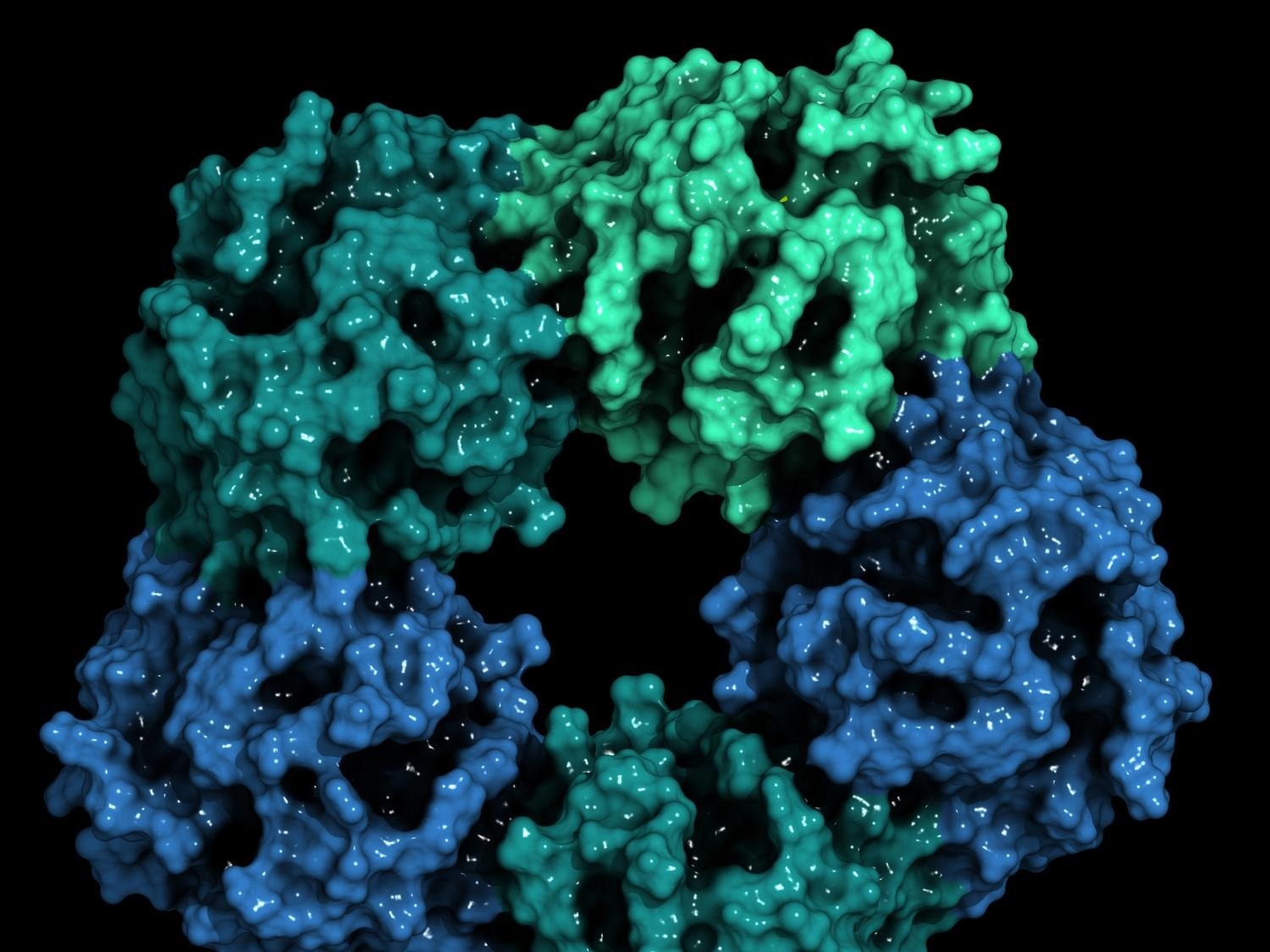
Penn State researchers developed a low-cost approach to design and develop sensors for human biomarkers, including for the monomeric C-reactive protein, illustrated here. This protein is involved in chronic inflammatory conditions such as heart disease and arthritis. Image Credit: Wirestock/iStock
Protein biomarkers can indicate chronic or acute diseases ranging from arthritis to cancer to bacterial infections, and traditional testing can cost anywhere from $100 to $1,000. The same measurement may now be performed for less than a dollar with new technology.
The research group reported their outcomes in the Nature Communications journal, integrating the measures of Howard Salis, Associate Professor of biological engineering, chemical engineering, and biomedical engineering; Grace Vezeau, who earned a doctorate in biological engineering from Penn State in 2021; and Lipika Gadila, who earned a bachelor of science in chemical engineering from Penn State in 2018.
The study outcomes have illustrated that RNA-based sensors could be engineered to detect human biomarker proteins, such as monomeric C-reactive protein, which is included in chronic inflammatory conditions like arthritis and heart disease, and interleukin-32 gamma, a signaling protein for acute infections like bacterial or viral infections. According to Salis, such sensors can be utilized to develop devices for diagnostic testing.
These tests can help a clinician diagnose a patient, but it’s more informative to carry out multiple biomarker measurements periodically over the span of several weeks. Right now, one test can be expensive, and they add up. With our new RNA-based technology, it’s now possible to carry out the same measurements for much less.
Howard Salis, Associate Professor, Biological Engineering, Chemical Engineering and Biomedical Engineering, The University of Pennsylvania
The technology is a combination of a cell-free expression system and engineered RNA-based sensors known as riboswitches. Cell-free expression systems consist of cellular machinery to read DNA and produce proteins, but they are not limited by cell membranes and allow heavy proteins to freely enter.
The riboswitches are designed to attach to a biomarker protein and control the activation or repression of an observable signal. The riboswitch itself has been generated within the cell-free expression system from DNA instructions. Collectively, the cost of such materials is around a dollar per reaction.
According to Salis, this is the first time that scientists have designed a riboswitch sensor to detect biomarker proteins. Salis stated that the challenge is finding out the best DNA instructions to produce highly sensitive protein sensors.
Past efforts to engineer such riboswitch sensors have largely relied on trial-and-error experimentation, for example, constructing and characterizing large random libraries to identify riboswitch variants—the genetic blueprints and aptamers—that work best.
Howard Salis, Associate Professor, Biological Engineering, Chemical Engineering and Biomedical Engineering, The University of Pennsylvania
Salis added, “Using a combination of thermodynamic modeling and computational optimization, we rationally designed new riboswitches that are predicted to be excellent protein sensors and then we tested them. Our design algorithm is called the Riboswitch Calculator.”
To detect three proteins, Salis and the scientists tested their new technology: MS2, a small protein discovered in a bacterial phage, as a proof-of-principle test; and the medically appropriate biomarkers present in human interleukin-32 gamma and human monomeric C-reactive protein. The scientists engineered 32 riboswitches, the majority of which were successful in sensing their target proteins.
Current assays require expensive detection reagents, expensive and bulky instruments, sample cold chain storage and distribution, and trained personnel. By applying modeling and computational design, we engineered low-cost protein sensors that can be freeze-dried and rehydrated. The next step is to develop an easy-to-use device that allows researchers and clinicians to use this new technology.
Howard Salis, Associate Professor, Biological Engineering, Chemical Engineering and Biomedical Engineering, The University of Pennsylvania
The study was financially supported by the Defense Advanced Research Projects Agency and the Air Force Office of Scientific Research.
Journal Reference
Vezeau, G. E., et al. (2023) Automated design of protein-binding riboswitches for sensing human biomarkers in a cell-free expression system. Nature Communications. doi.org/10.1038/s41467-023-38098-0.